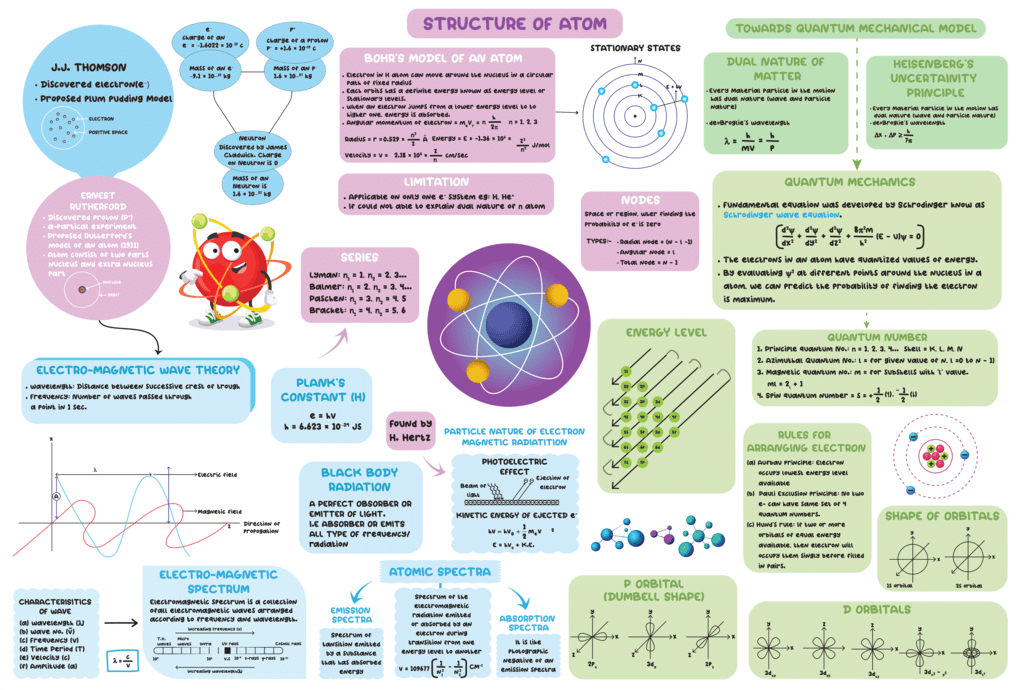NEET Exam > NEET Notes > Mind Map: Structure of Atom
Mind Map: Structure of Atom - NEET PDF Download
FAQs on Mind Map: Structure of Atom - NEET
| 1. What are the main components of an atom? |  |
Ans. An atom consists of three primary components: protons, neutrons, and electrons. Protons are positively charged particles located in the nucleus, neutrons are neutral particles also found in the nucleus, and electrons are negatively charged particles that orbit the nucleus in electron shells.
| 2. How do protons and neutrons differ in an atom? |  |
Ans. Protons and neutrons both reside in the nucleus of an atom, but they have different properties. Protons carry a positive charge, while neutrons have no charge (they are neutral). The number of protons in an atom defines its atomic number and determines the element, while neutrons contribute to the atomic mass and stability of the nucleus.
| 3. What is the significance of electrons in an atom? |  |
Ans. Electrons are crucial for an atom's chemical properties and behavior. They occupy various energy levels or shells around the nucleus and are involved in forming chemical bonds with other atoms. The arrangement of electrons determines how an atom interacts with others, influencing its reactivity and the formation of molecules.
| 4. What is an atomic number and how does it relate to elements? |  |
Ans. The atomic number of an element is the number of protons in the nucleus of its atoms. It uniquely identifies an element and determines its position in the periodic table. Each element has a distinct atomic number, which also influences its chemical properties and behavior.
| 5. How do isotopes differ from each other in an atom? |  |
Ans. Isotopes are variants of the same element that have the same number of protons but different numbers of neutrons. This difference in neutrons results in varying atomic masses for the isotopes. While isotopes of an element exhibit similar chemical properties, they may have different physical properties, such as stability and radioactivity.
Related Searches





















